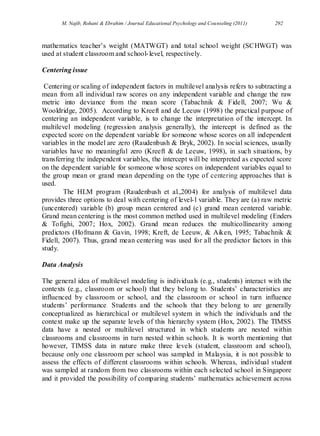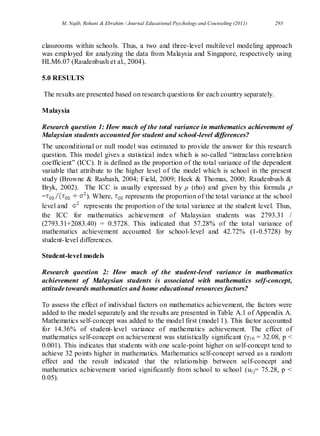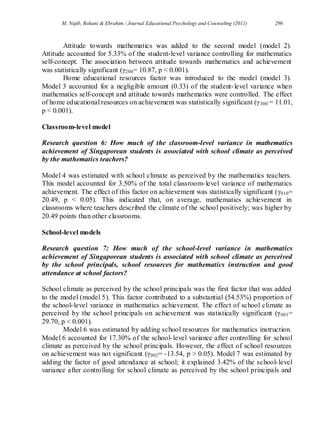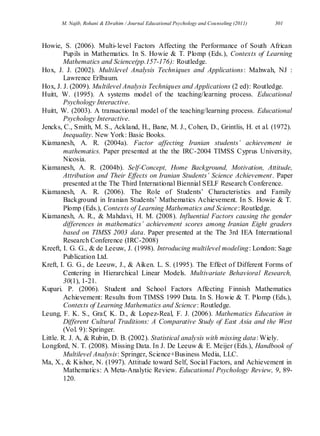This document summarizes a study that analyzed factors influencing mathematics achievement among Malaysian and Singaporean eighth-grade students using data from the 2003 Trends in International Mathematics and Science Study (TIMSS). The study found that 57.28% of the total variance in mathematics achievement in Malaysia was accounted for by school-level differences, while 74.6% of the variance in Singapore was accounted for by classroom-level differences. At the student level, mathematics self-concept was the most influential factor on achievement in both countries. At the school level, school climate as perceived by principals was the most influential factor on achievement in both countries. The study used multilevel modeling to analyze how student, classroom, and school factors contributed to mathematics achievement



















